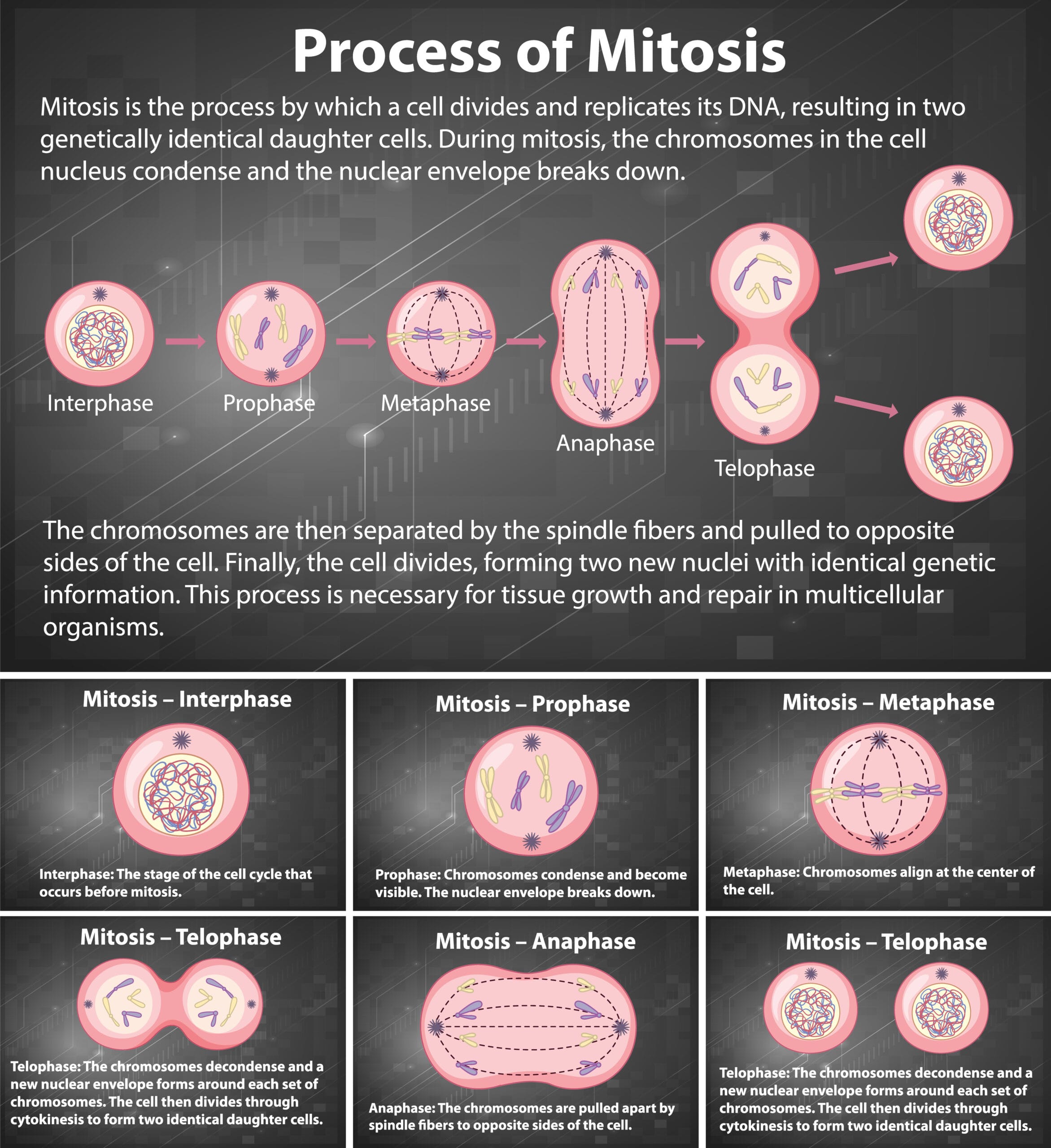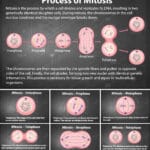Mitosis is a fundamental biological process where a single cell divides to produce two identical daughter cells, each containing the same number of chromosomes as the parent cell. It is a type of cell division that ensures genetic consistency by faithfully replicating and distributing the DNA of the parent cell to its offspring.
Why Understanding Mitosis Is Essential for Grasping the Basics of Biology
Mitosis is one of the most fundamental processes in biology, essential for understanding how life operates at a cellular level. It plays a central role in growth, repair, and reproduction, making it a cornerstone of biological study. Here’s why understanding mitosis is crucial:
- Foundation of Cell Biology:
Mitosis explains how cells divide and ensure genetic continuity. It helps us understand how organisms grow and maintain their structure and function, linking the microscopic world of cells to the macroscopic life forms we observe. - Application in Medicine and Science:
- Knowledge of mitosis is vital for studying diseases like cancer, where cell division becomes uncontrolled. It also informs treatments, such as chemotherapy, which targets rapidly dividing cells.
- Relevance to Evolution and Development:
- Mitosis highlights how complex organisms develop from a single fertilized egg. It provides insights into embryonic development and the evolution of multicellular life.
- Practical Implications in Everyday Life:
- From tissue healing to the natural regeneration of skin and hair, mitosis explains everyday biological phenomena. It connects theoretical biology to real-world processes that affect our lives.
By understanding mitosis, we gain a deeper appreciation of the cellular processes that sustain life, making it a gateway to comprehending the intricacies of biology and its applications in health, science, and technology.
The Phases of Mitosis
a. Prophase
- Key events:
- Chromatin condenses into visible chromosomes.
- The nuclear envelope begins to break down.
- Spindle fibers start forming.
- Visual analogy: Preparing for a performance (getting organized).
b. Metaphase
- Key events:
- Chromosomes align at the metaphase plate (cell’s equator).
- Spindle fibers attach to the centromeres of each chromosome.
- Visual analogy: A perfectly arranged line-up for a photograph.
c. Anaphase
- Key events:
- Sister chromatids are pulled apart to opposite ends of the cell.
- The cell begins to elongate.
- Visual analogy: Tug-of-war with chromatids moving to opposite sides.
d. Telophase
- Key events:
- Chromosomes arrive at opposite poles and decondense.
- Nuclear envelopes re-form around each set of chromosomes.
- Spindle fibers dissolve.
- Visual analogy: Wrapping up a performance.
e. Cytokinesis
- Key events:
- Division of the cytoplasm to form two distinct daughter cells.
- Differences in plant vs. animal cells during cytokinesis (cell plate vs. cleavage furrow).
- Visual analogy: Splitting a pizza into two equal halves.





